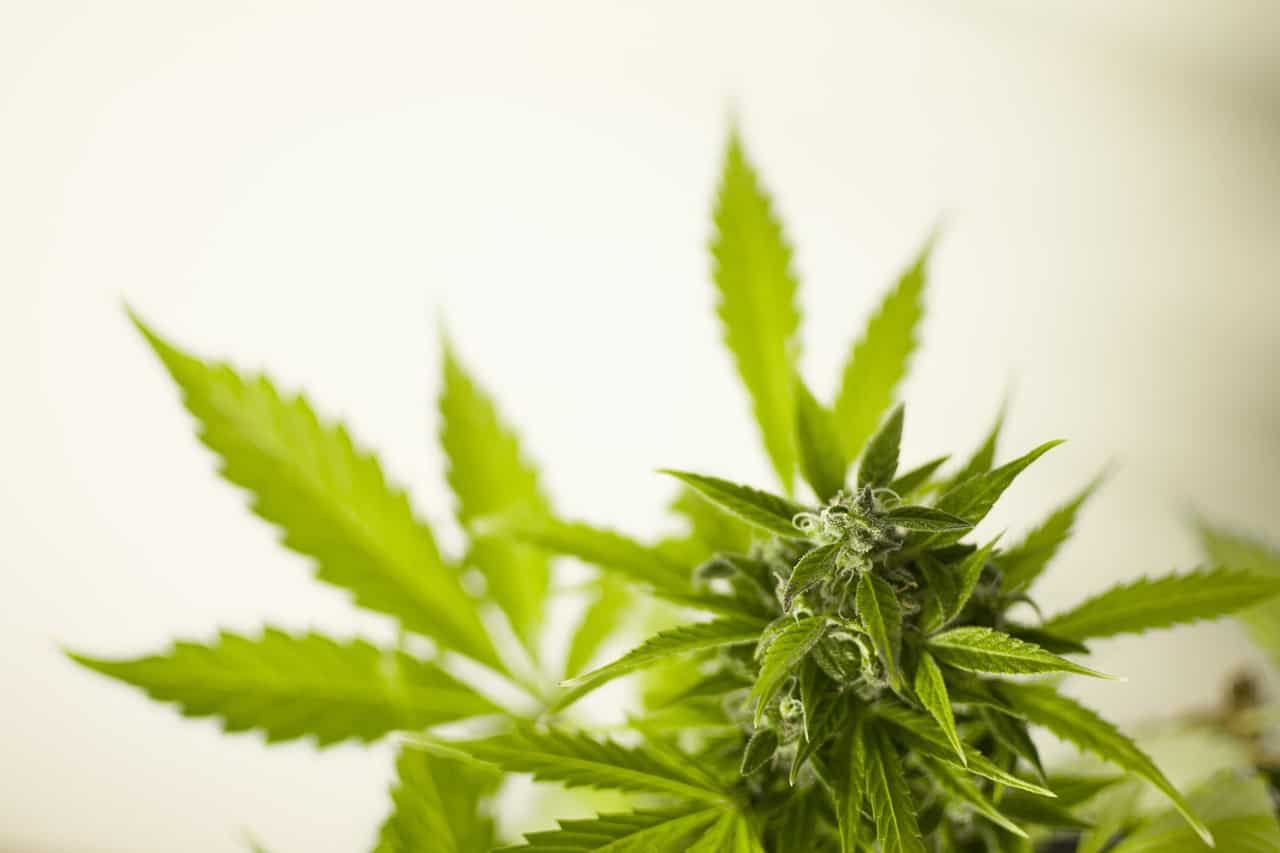
Many wonder about how long weed or marijuana stays in the body system, mostly because they worry about a required drug test returning positive due to marijuana still present in the system.
To understand how long it stays in the system, it is best to understand the drug itself first. The main chemical found in marijuana is called tetrahydrocannabinol (THC), which rapidly spreads throughout body through the bloodstream after consumption. This drug comes from the dried flowers of a cannabis plant. Consumption of marijuana causes the person to be in a temporary state of euphoria that lasts for a few hours depending on the body’s metabolism and the product’s potency. This euphoric feeling can alter the person’s mood, physical sense and sense of time, and their body movement. Such impairment is caused by the stimulation of neurons by THC in the brain’s reward system, allowing for the release of dopamine—the neurotransmitter responsible for the change in emotions, pleasure, pain, and movements. Marijuana is ingested by either smoking, eating, or drinking. Eating marijuana or consuming “marijuana edibles” has a slower onset of effects because the drug needs to go through the digestive system, however, this usually means that its effect will also last longer in comparison to when marijuana is taken in the body by smoking. If marijuana is smoked instead, it is able to be absorbed in the blood and detectable in a short amount of time as it is rapidly broken down by the body.
THC is broken down in the liver and contains roughly about 80 chemical metabolites called cannabinoids. While the feeling of rush due to marijuana has vanished, these cannabinoids remain the body. Meanwhile, the non-THC chemicals making up marijuana do not stay in the body as long as cannabinoids do.
While many states are more agreeing when it comes to legalizing marijuana for medical and recreational use, many employers and or organizations continue to require drug testing. Most drug tests look for cannabinoids, but the length that marijuana stays in the body further varies by its location in the body. Urine testing is one of the most common ways to detect marijuana use but the measurement can also be obtained from other components or parts of the body such as hair follicles.
Urine Tests
Most urine tests are able to detect marijuana multiple days after the last consumption, but daily users are likely to have marijuana appear in their urine even multiple weeks later. A rough estimate of marijuana’s stay in the urine is:
- For those who smoke weed only once in a month or so, the marijuana will stay for about eight days.
- People who consume the drug regularly, which is roughly 5 to 6 times in a month, will cause the drug to occupy the system for up to 15 days.
- Heavy consumers, those who smoke or ingest the drug for more than twenty days in a month will have marijuana stay in the urine between 45 and 80 days. This testing, however, can only identify recent usage of marijuana and not intoxication levels due to the time needed between consumption, absorbance, and elimination. Additionally, urine tests only search for the non-psychoactive part of THC.
Urine testing works for many employers regardless of its limited identification because of their zero drug use tolerance.
Blood Tests
Unlike urine tests, blood testing is a good method to measure THC levels since it looks out for the active version of THC. Blood tests have a small time frame in order to detect marijuana use, making it an uncommon method to test for its levels. Generally, the time for testing needs to be within three to four hours after a person uses marijuana. This is the time that the THC is still contained in the bloodstream. The few times blood testing for marijuana is used are when someone is involved in a car accident and during occasionally sobriety checkpoints on the road. An advantage is that blood (and saliva) tests are able to show a person’s current intoxication like blood alcohol concentration tests do. The difference between alcohol concentration tests and marijuana tests through the blood is that blood testing for marijuana does not mark the impairment level.
For saliva tests, it is able to detect marijuana levels within 24 hours of consumption, unlike the 4 hour window time of blood tests. This goes even if it was just from a single session of smoking or consumption of marijuana. Those who consume it regularly can have the effects last up to 72 hours. A con to this testing is that it is less proven than the other methods because it is relatively new and does not have a well-established knowledge of sensitivity. Saliva testing tries to look for the secreted THC found inside the oral tissues that were not washed out.
Hair Follicle Tests
Similar to urine testing, hair follicle testing can identify THC levels in the body once THC has been passed from the bloodstream to hair follicles. Another way is from physical contact where testing positive for marijuana is possible even if the person did not take the drug. Unfortunately, exposing oneself around someone smoking marijuana, touching marijuana or has been touched by someone who held marijuana will cause the test results to return positive. Hair tests become more objectionable because it measures the non-psychoactive residues that stay in the hair, not the current use. These are absorbed internally and do not appear in the hair 7-10 days later. While shampoo can help in removing the external particles that get stuck, it cannot ultimately be washed out, making hair as possibly the one with the longest detection period in terms of marijuana. The duration that a person may test positive for marijuana exposure is 90 days.
Although the length that traces of marijuana will be present in the body for a test is not necessarily clear and is usually indefinite, there are also various factors that can affect how long it will stay in the system.

Photo from Needpix.com
What Affects the Time Marijuana Stays in the Body?
Frequency of Use
Again, the frequency that someone uses marijuana will undoubtedly have THC traces in their body for an extended amount of time. This occurs because there is likely to be a buildup of THC in the body from the daily or regular use of marijuana as the time the active ingredients break down in the body depends on the amount of marijuana consumption.
Method of Use
As previously mentioned, marijuana can be consumed in different ways and how it is used can affect the time it will be detected. If smoked, THC levels will diminish in the body at a faster rate than when it is ingested and the chemicals need to be broken down more slowly.
THC Concentration
The potency of marijuana will affect how long it will stay in the body. Since marijuana comes in different levels of THC, the one with a higher potency will leave the traces at a longer time than that of a lower concentration.
Weight and Genetics
Cannabinoids are lipid-soluble metabolites. What this means is that they are stored in fatty tissues, along with organs, before being slowly released over time throughout the body. People with less body fat will have THC leave their body at a faster rate than those with more fat.
Thus, someone who regularly exercises and stays healthy is more likely to clear THC faster than someone with poor healthy conditions. The elimination half-life of these cannabinoids differ—some have a 20-hour half-life while those in body fats have 10-13 days of half-life.
It is important to note that while exercising is not just good in diminishing marijuana levels but for your body as well, too much exercise may also cause for THC concentrations to increase. Exercising breaks down fat and since THC is stored in the body’s fat tissues, it will release the cannabinoids and THC will then be reabsorbed into the system.
Additionally, since females are more likely to contain more body fat than males, marijuana may be metabolized a bit longer for females.
Genetics affects the time that THC is in the system in that people with certain inherited traits, changing the way the body functions, can also contribute to the length of time. For example, those with the different variants of a superfamily of enzymes named Cytochrome 450 will lead to THC being excreted out of the body through urine as it alters the behavior of THC in the body.
Each individual who consumes marijuana has an entirely different metabolism rate than the other. As a consequence, the way in which the body functions to break down cannabinoids can largely be affected and alter how long marijuana will stay in the body system.
Evading unwanted test results
Many try to get their way out of testing positive for marijuana such as flushing out the system with water or use a detoxification kit. Going through both simple and extensive ways to alter a drug test’s result are usually futile and are not reliable. Moreover, some of the kits promoted to diminish THC levels in the body might be dangerous in reality and contain unknown ingredients.
Others also try to alter the results by masking their urine sample with other chemicals like salt or giving a urine sample that isn’t their own. Further tests confirming the urine sample or the procedure can recognize such cover-ups, showing that there isn’t really a way to change the results. Additionally, teas may have the ability to change the levels of creatinine in the urine and change the results. Still, creatinine levels become a red flag to testers when it becomes too high and an employer may rule for it to be invalid and unacceptable.
Fortunately, there are no known substances that can cause for a urine test to return false positive. For a brief amount of time, ibuprofen used to interfere with the test and lead to false marijuana positive test results but has been long corrected and the problem removed.
Along with the lines of how long marijuana remains in the body, many also ask about its undesirable effects on the body.
It is true that it is often promoted for its medical benefits and the feeling of pleasure it releases, however, prolonged smoking and or consumption may also lead to chronic health issues and have long-term effects.

Photo from thebluemindgallery.com
Effects on the Body
Respiration
In terms of smoking marijuana, its smoke is made up of different toxic chemicals, like tobacco smoke. This includes ammonia and hydrogen cyanide, both of which can irritate the lungs, causing a smoker to often wheeze and cough. Regularly smoking marijuana will give the person a higher possibility of contracting lung infections and bronchitis.
Circulation
Marijuana consumption is often associated with bloodshot eyes. This is because marijuana causes the blood vessels in the eyes to expand, an illustration of how it affects the circulatory system.
Additionally, someone who has a heart disease and uses marijuana increases their chance of having a heart attack. The movement of THC to the bloodstream can increase the heart rate of about 20-50 beats per minute and last for about three hours.
Brain
Aside from the impairments previously mentioned that it causes the brain, high doses of Marijuana or high concentrations of THC can lead to hallucinations. Although more research is needed for better understanding, many believe that there might be a relationship between the use of marijuana and certain disorders like depression and anxiety.
For individuals with brains are not fully-developed, using marijuana will likely affect the thinking and memory processes.
Once the feeling of euphoria has subsided, a person will generally feel tired and or depressed. In more extreme cases, a person might be anxious and eventually develop a marijuana use disorder.
Meanwhile, those pregnant and continue to consume marijuana will pass on its consequences to their unborn baby as it can also affect the brain. This may result into the child having difficulties with memory, concentration, and problem-solving abilities.
Digestion
Smoking marijuana may prompt a burning or stinging sensation in the mouth and throat when inhaling.
When the drug is consumed via food or when it is taken orally, it passes through the liver for digestion and processing. While many have found marijuana to be effective in reducing nauseating or stomach pains, it is still possible for a person to experience nausea and vomiting due to processing.
Many are also familiar with the term “munchies”. This is what happens when people start observing the increase in their appetites after consumption of marijuana. For those who are using marijuana for medical reasons and need to gain weight, this might be an advantage and for others who need to lose weight, this side effect is more of an unwanted effect.
Are there any shortcuts to reducing the level of marijuana in the body?
Ultimately, while the immediate effects of marijuana leave your body in a short amount of time, the trace levels of its metabolites remain in your body. This can last from a few days, to weeks, and possibly months, depending on how frequently one uses marijuana. Furthermore, the detection windows are reliant on the type of test that will be conducted and other factors like genetics. There are no shortcuts when it comes to getting rid of the cannabinoids in the body.
Disclaimer:
You knew it was coming, the text in this article is informational only and not intended to be legal or medical advice or recommendations in any way. Use this information as you will with your own discretion.
The bottom line is be safe, follow the rules, and enjoy some Mary Jane while you are in the Bicentennial State for your Rocky Mountain High!



